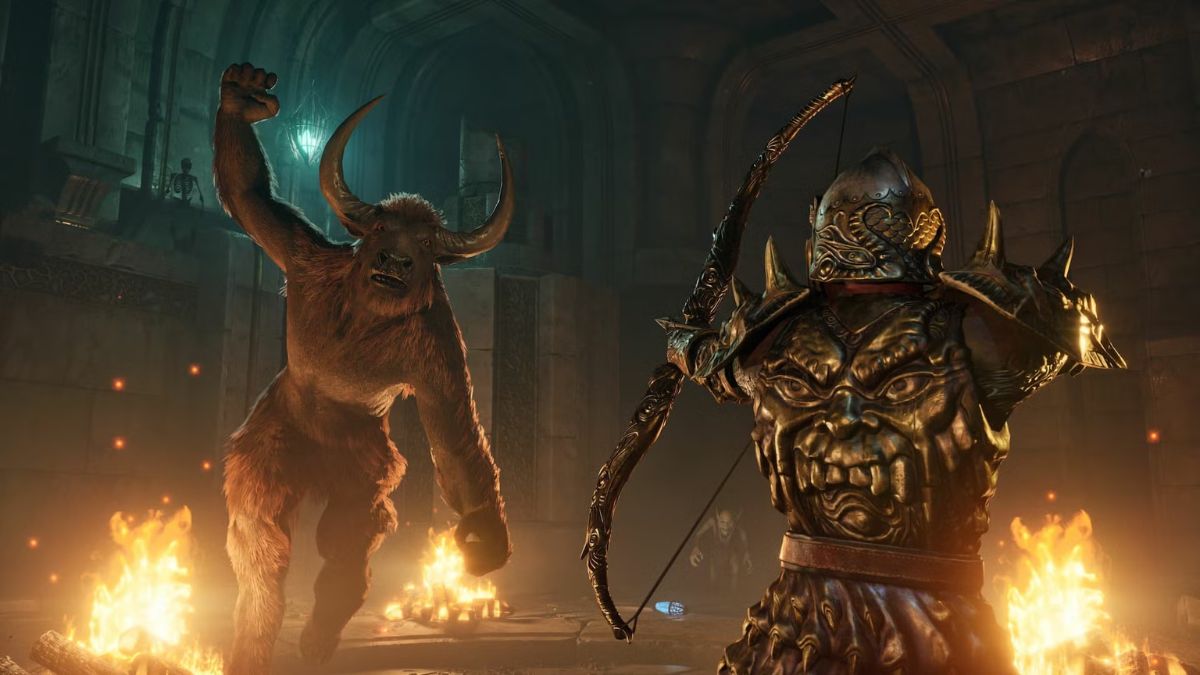Best Elder Scrolls IV: Oblivion Remastered PC settings for max FPS

The Elder Scrolls IV: Oblivion Remastered is finally here, and it looks better than ever. The game brings updated graphics, improved lighting, better textures, and overall a much more modern look compared to the original 2006 version. Everything, from the characters to the world around you, feels more alive and detailed. But to really enjoy this new experience, you need to make sure your graphics settings are set just right.
Oblivion Remastered is not a light game, as it’s a bit demanding. In fact, the recommended system requirements include an RTX 2080 or an AMD Radeon RX 6800 XT. And if you want the absolute best experience, with max settings and high frame rates, you'll need something even stronger, like an RTX 3080 or something newer.
Prime Day is finally here! Find all the biggest tech and PC deals below.
- Sapphire 11348-03-20G Pulse AMD Radeon™ RX 9070 XT Was $779 Now $739
- AMD Ryzen 7 7800X3D 8-Core, 16-Thread Desktop Processor Was $449 Now $341
- ASUS RTX™ 5060 OC Edition Graphics Card Was $379 Now $339
- LG 77-Inch Class OLED evo AI 4K C5 Series Smart TV Was $3,696 Now $2,796
- Intel® Core™ i7-14700K New Gaming Desktop Was $320.99 Now $274
- Lexar 2TB NM1090 w/HeatSink SSD PCIe Gen5x4 NVMe M.2 Was $281.97 Now $214.98
- Apple Watch Series 10 GPS + Cellular 42mm case Smartwatch Was $499.99 Now $379.99
- ASUS ROG Strix G16 (2025) 16" FHD, RTX 5060 gaming laptop Was $1,499.99 Now $1,274.99
- Apple iPad mini (A17 Pro): Apple Intelligence Was $499.99 Now $379.99
*Prices and savings subject to change. Click through to get the current prices.
However, no matter what hardware you have, we’ll walk you through the best graphics settings for Oblivion Remastered. These settings will give you great visuals while keeping the game smooth. If you're using an older or weaker graphics card, you may need to lower some settings to get better performance. But if you have a newer GPU, don't hesitate to turn things up to high for the best experience.
Best Elder Scrolls IV: Oblivion Remastered PC settings
General Settings
| Window Mode | Fullscreen |
| Display Resolution | Native |
| Resolution Scale | 100% |
| V-Sync | Off (Turn it on to eliminate screen tearing) |
| Frame Rate Limited | Uncapped (Set it to 60 if you face high CPU usage) |
| First or Third Person | Depends on your preference |
| Motion Blur | Off |
| Screen Splace Reflections | On |
Quality Settings
| Quality Level | Custom |
| View Distance Quality | High |
| Effects Quality | Ultra |
| Foliage Quality | Medium |
| Shadow Quality | Medoum |
| Global Illumination Quality | High |
| Texture Quality | High only if your GPU’s VRAM is above 12GB, otherwise keep it to low or medium |
| Reflection Quality | Medium |
| Hair Quality | High |
| Cloth Quality | High |
| Lumen Hardware RT | Off |
| Lumen Hardware RT Lighting Mode | Low |
| Lumen Software RT Quality | Low |
Advanced Settings
| Upscaling Technique | DLSS (Nvidia Cards), FSR (AMD Cards) |
| DLSS/FSR Mode | Balanced |
| Sharpening | As per your preference |
| Frame Generation | On (Turn it off if it starts causing stuttering or flickering) |
| Nvidia Reflect | On |
Additional tips to improve performance in The Elder Scrolls IV: Oblivion Remastered
Now, aside from adjusting the in-game graphics settings, there are a few more things you can do to boost performance:
- Update the GPU drivers: Updating your GPU drivers is one of the easiest ways to make sure your graphics card runs well with the latest games. New drivers often fix bugs, improve stability, and even increase FPS in some cases. You can get the latest drivers from your GPU app, like the Nvidia App or AMD Software.
- Close unnecessary background applications: Closing background applications is another helpful step. When too many apps are running in the background, like browsers, chat apps, or music players, they take up CPU and memory. This can slow the game down and make your PC work harder than it needs to. Closing these apps before you start the game gives your system more power to focus on Oblivion Remastered.
- Upgrade your PC: Upgrading your hardware is the most effective option if your system is really struggling. If your graphics card is several years old or your processor can't keep up, no amount of setting tweaks will fully fix the problem. A better GPU, more RAM, or a faster CPU can greatly improve how the game runs and looks, especially at higher settings.

